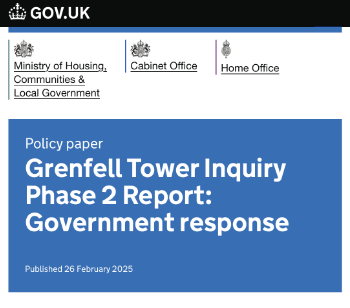Construction consolidation centre CCC
Contents |
[edit] Introduction
A construction consolidation centre (CCC) is a distribution facility that can be used in the process of managing project logistics, channelling material deliveries to a large, single construction site or a number of different sites. It facilitates the efficient flow of materials through the supply chain, reducing waste and other issues such as congestion.
Construction materials are delivered from suppliers to the CCC where they are stored until call-off from the site, at which point the CCC operator makes up and delivers a consolidated load. This is done on a ‘just in time’ basis, for enhanced efficiency.
Usually, the main contractor takes the decision to use a CCC and so carries the cost. However, subcontractors, suppliers and hauliers all see the benefit and so there can be an effort to spread the costs.
While distribution centres have been commonly used in other sectors in the UK, currently there are only a few examples of CCCs. The Heathrow Consolidation Centre (HCC) was established in 2001 for the ongoing work at Heathrow airport. In 2005, the London Construction Consolidation Centre (LCCC) was set up as a pilot study. Subsequently, Wilson James took over the LCCC and relocated it to Silvertown, near City Airport. The house builder Taylor Wimpey has set up Taylor Wimpey Logistics which consolidates materials in a Newmarket facility that then provides for its sites across England and Wales.
[edit] Specifications
[edit] Project size
The use of a CCC is not necessarily dependent on the size of a project, but rather whether there is an ongoing business volume to make it worthwhile. Shared user CCCs can be an option as opposed to single users, which allows the operating costs to be spread between users.
[edit] Location
As a general rule, CCCs are located close to a motorway or major road network. This is so that the impact on local roads is kept to a minimum and to minimise the turnaround times of hauliers.
Sometimes a CCC is situated where several different sites can be reached in 30-45 minutes, but it can be more sensible, if there are a reasonable number of sites, to have two smaller CCCs, each of which are closer to the respective sites, than one large CCC.
[edit] Advantages
There are several advantages associated with using CCCs. Studies looking into their general impact have found:
- Up to 70% reduction in freight traffic to site.
- A 6% productivity gain based on increased workforce productivity of 30 minutes per day.
- A 7-15% reduction in waste.
- More efficient utilisation of delivery vehicles.
- Reduced carbon emissions and traffic congestion.
- Noise and pollution reductions.
- Reverse logistics means that journeys from the site can be used for waste removal, return of unused materials, and so on.
- Cost savings associated with fewer and more efficient vehicle journeys.
- Improved programme certainty.
- Better storage facilities than are often available on site.
- Excess packaging can be removed at the CCC rather than creating clutter on site.
- Materials delivery can be sequenced.
- Manufacturer errors or damage can be detected at the CCC rather than when delivered to site.
[edit] Related articles on Designing Buildings
- Circular economy.
- Construction logistics manager.
- Design for Manufacture and Assembly (DfMA).
- Forklift.
- Lean construction.
- Logistics management.
- Materials on site.
- Mean lean green.
- Off site materials.
- Site storage.
- Site Waste Management Plan.
- Waste and Resources Action Plan WRAP.
- Warehouse.
[edit] External resources
Featured articles and news
CIOB student competitive construction challenge Ireland
Inspiring a new wave of Irish construction professionals.
Challenges of the net zero transition in Scotland
Skills shortage and ageing workforce hampering Scottish transition to net zero.
Private rental sector, living standards and fuel poverty
Report from the NRH in partnership with Impact on Urban Health.
.Cold chain condensing units market update
Tracking the evolution of commercial refrigeration unit markets.
Attending a conservation training course, personal account
The benefits of further learning for professsionals.
Restoring Alexander Pope's grotto
The only surviving part of his villa in Twickenham.
International Women's Day 8 March, 2025
Accelerating Action for For ALL Women and Girls: Rights. Equality. Empowerment.
Lack of construction careers advice threatens housing targets
CIOB warning on Government plans to accelerate housebuilding and development.
Shelter from the storm in Ukraine
Ukraine’s architects paving the path to recovery.
BSRIA market intelligence division key appointment
Lisa Wiltshire to lead rapidly growing Market Intelligence division.
A blueprint for construction’s sustainability efforts
Practical steps to achieve the United Nations Sustainable Development Goals.
Timber in Construction Roadmap
Ambitious plans from the Government to increase the use of timber in construction.
ECA digital series unveils road to net-zero.
Retrofit and Decarbonisation framework N9 launched
Aligned with LHCPG social value strategy and the Gold Standard.
Competence framework for sustainability
In the built environment launched by CIC and the Edge.
Institute of Roofing members welcomed into CIOB
IoR members transition to CIOB membership based on individual expertise and qualifications.
Join the Building Safety Linkedin group to stay up-to-date and join the debate.
Government responds to the final Grenfell Inquiry report
A with a brief summary with reactions to their response.
























